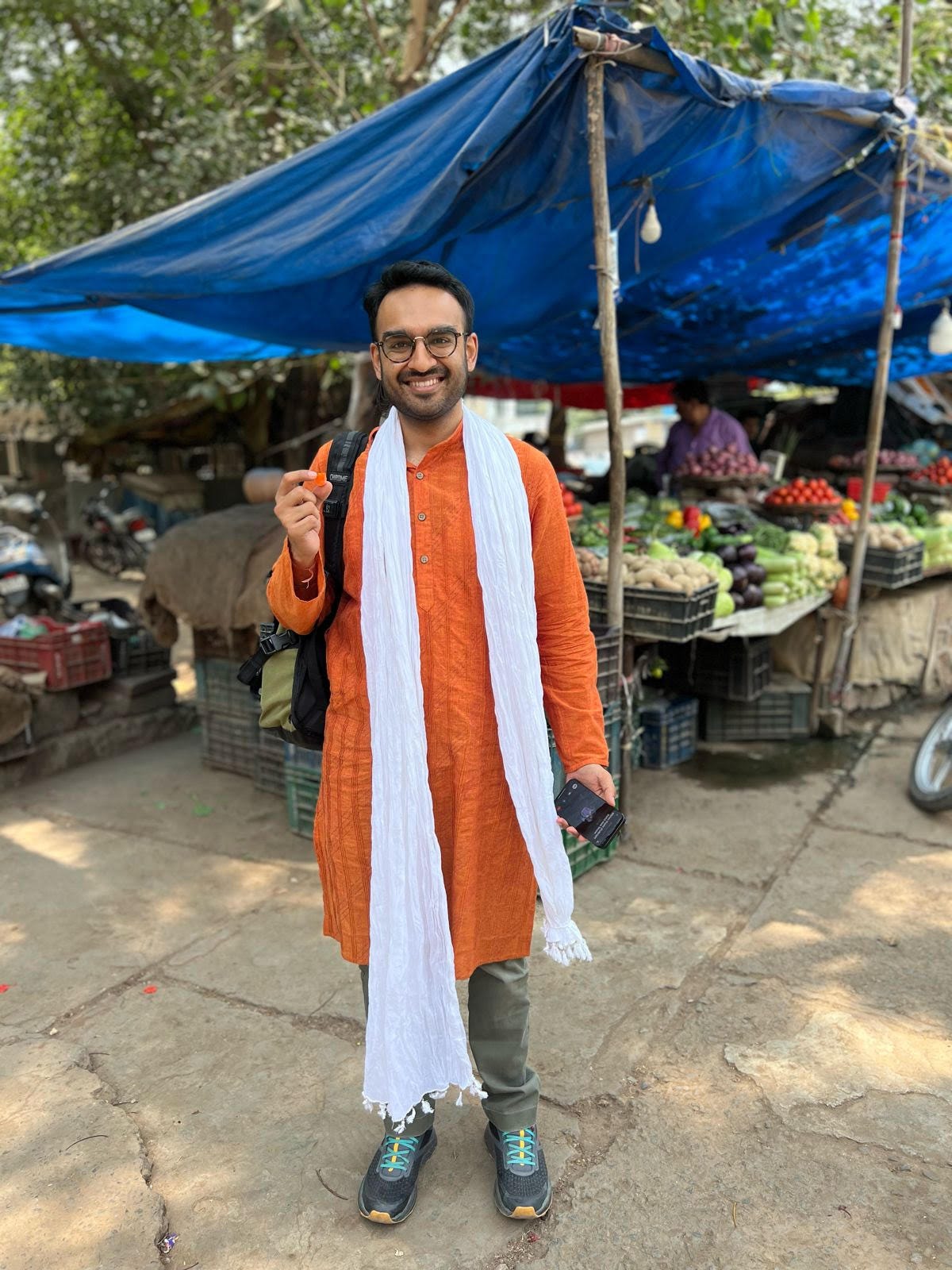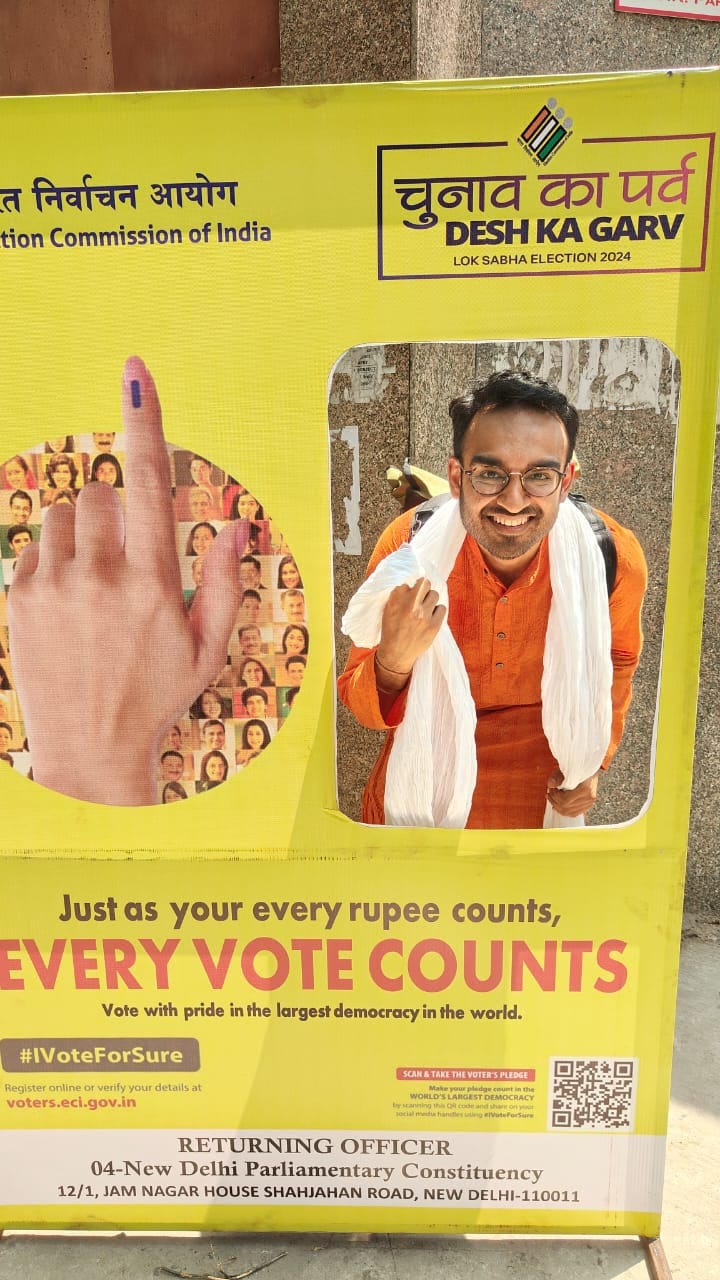NEW: India’s Dance of Democracy — observations and insights from tracking the 2024 General Elections in Delhi
The opposition is looking strong in Delhi -- tides are turning slowly -- but BJP still appear poised to win big on the national stage. Also many other funny, weird, unexpected insights I picked up.
NEW DELHI — Here are my key takeaways from India's Dance of Democracy that I observed on May 25th, during General Elections in the nation’s capital Delhi, where I visited 6 major polling stations: Mehrauli, Vasant Kunj, CR Park, Okhla, Greater Kailash and Hauz Khas. I criss crossed Delhi covering the election from 8am to 6pm when polls closed — from dawn till dusk.
Scroll to the bottom for a snap of my bright election day outfit!
Based on dozens of in-person voter interviews and on the ground observations, here’s my reported 🧵
As a Tech and Politics reporter with The Hindu my intention behind tracking Delhi polls was to understand media literacy among voters — where do they get their information from (to better understand Misinfo/Disinfo and Fake News as well as which sources are trusted), who voters are supporting and why, as well as observe first-hand the nitty-gritty of major general elections in India. These are my personal observations and insights based on my reporting, they don’t represent anyone else’s views.
One of the most common and fascinating observations was hearing people vote based on how their families vote or tell them to vote. Groupthink. So many told me they voted the same way as their family or felt pressured to – children from parents or sometimes, vice versa; all Congress family & all BJP family etc, something I think is unique to India unlike many in the West.
I was impressed how smooth and positive the voting experience was at all the polling stations in Delhi. The process was fast (short quick lines 10-15 mins max, which is much faster than most voting sites in the US), and mostly seamless, well-organized with an army of volunteers helping voters at every polling site.
No conflicts among voters or police were observed or disgruntlement with the process nor did I hear anything about controversial Electronic Voting Machines (EVMs) tampering allegations. People appear to have had a faith in the system.
On demographics, Delhi saw a lower percentage of youth vote, indicating a disillusionment or apathy with the system. Middle-aged and older people voted in higher numbers; the male to female ratio was 80:20. The disparity was also seen in the candidates, who were mostly middle-aged and older men.
An overwhelming major approx. 90-95% of candidates in Delhi were Hindus; a handful were from the Muslim, Sikh and Jain communities while none that I observed were Christians, Parsis or Jews.
Although South Delhi where I live leans towards the INDIA bloc overall Delhi voters appeared equally divided between the BJP and AAP; there was rarely any support for the Congress individually, which seemed to be benefitting from the alliance preferred by non-BJP supporters.
Contrary to popular beliefs, it was the economy, style of governance and not religious ideology that informed most voters’ decisions. People want tangible results in the form of subsidies, price cuts, school admissions and jobs. Price hikes, unemployment and Modi’s leadership style were some of the main reasons for voting against the BJP.
The ruling party within the central government, the BJP, had a prominent presence at many of the polling sites with tables and volunteers, despite being a minority in some polling areas like Okhla which are muslim majority. Their branding, presence and energy often appeared to be stronger than others parties.
While AAP (who’s leader Arvind Kejriwal is the Cheif Minister of Delhi) was hailed for improving Delhi’s schools, education, healthcare services and reducing government fees for autos and taxis, a major chunk of Delhi’s migrant labor force supported BJP for strong development done in their hometown states like U.P., Bihar and Haryana.
Eliminating crimes, giving free water and electricity to farmers and INR 2,000 to women in U.P. every three months, improving roads and infrastructure, and getting water and electricity in remote areas available, as well as efficient governance and maintenance earned BJP accolades among voters I chatted with.
BJP supporters praise PM Modi for raising India’s profile and giving the country a sense of power and identity on the global landscape. There is a preference among many voters for Modi and Yogi as strong men who can provide the nation with a sense of safety and security.
On the other hand, many Delhi voters were strongly against Modi and his Hindutva ideology and strong man style of ruling; hence, their vote for the INDIA alliance or AAP was more of an anti-BJP vote rather than a pro-AAP/alliance vote.
A large percentage of voters had this perception that their lives would remain the same irrespective of which party comes to power. They have lost faith in the political system, calling it corrupt in every sense.
Hindu-Muslim conflict -- what’s portrayed in the media contradicts the ground reality. Communal harmony was evident across many interviews. Voters opined politicians weaponize communal issues to serve themselves in the short run by gaining a certain sect of voters.
There has been a shift in the narrative of overwhelming BJP strength after 10 years in power; there was no Modi wave in Delhi. As the general elections proceeded, the opposition gained momentum. Voters said the tides are slowly turning with a yearning for change among many and so the opposition will continue to rise in Delhi at least.
Contrary to Europe and the US, in India, a party’s symbol matters the most, especially for illiterate voters, for whom it serves as an essential visual cue. It’s more than just a branding thing and hence, is used prominently in political campaigns.
Although there are only 2-3 major parties, a large number of independent parties have symbols like flute, bat, nail cutter, almirah etc contest elections. These parties have an extremely low chance of getting any votes but it's another amusing and unique thing found in India.
Getting inked is also a very Indian thing, unlike in the US and Europe. It's a remarkable visual cue that someone has voted, done their bit for democracy. It also feels more tangible since it’s on their body, making it more powerful and creating pride.
(I didn’t actually vote myself.)




Great on the spot assessment. Much like brexit, older people will decide the government. The appeal to senior citizens to vote was evident While there is acceptance of corruption, good to know choices made on economic progress and governance.
An article of insightful observations about the current General elections in India. Groupthink perhaps reflects India’s caste and tribal instincts. A view of a person who has observed the voting process in the US and is able to compare and contrast.